The Reddish Egret (Egretta rufescens) can be found along the Texas coast from the Louisiana border to the Rio Grande River. It is a largish sized heron that comes in two flavors. The dark morph is grayish with a contrasting reddish brown head and neck. The white morph is all white. Both morphs sport shaggy head and neck feathers, a bicolored bill and bluish legs. Although the Dark morph is most common in Texas, the White morph is regularly seen.
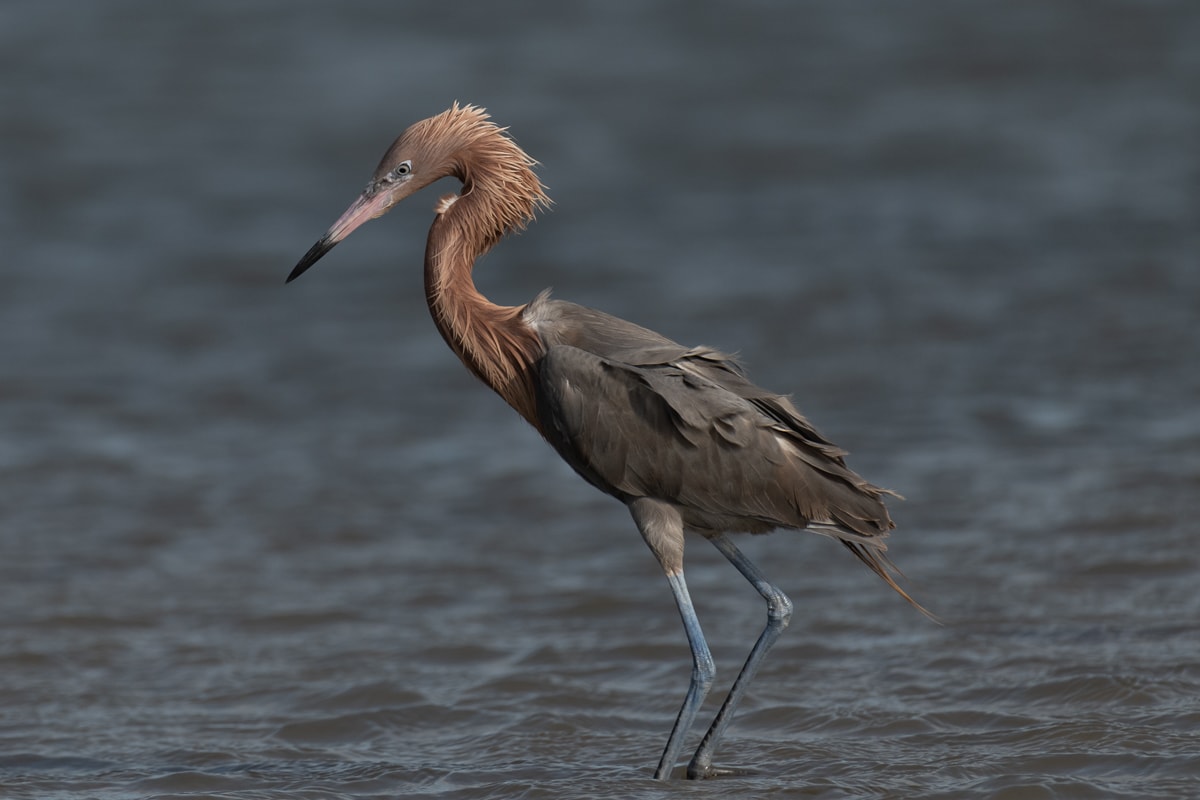
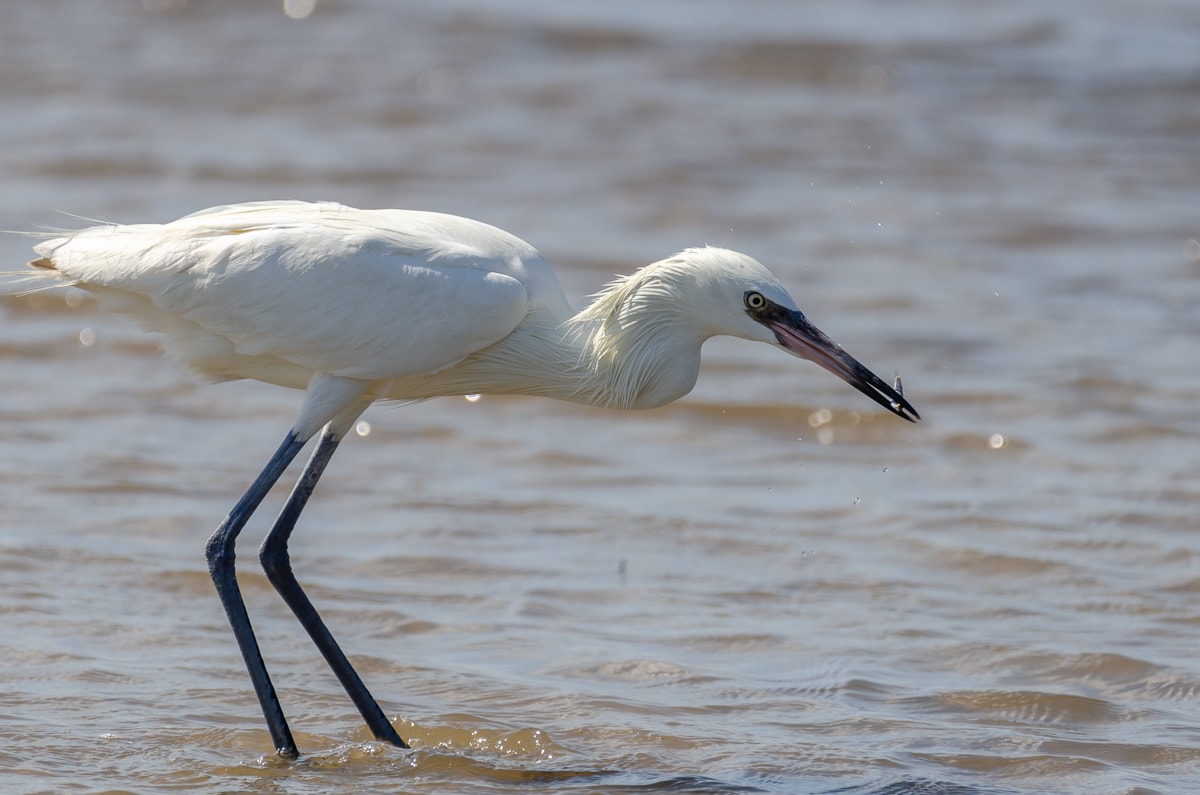
Reddish Egrets prowl coastal flats, shallow surf and nearby lagoons for its prey. Prey consists of any and all small fish species found in the feeding habitat.
These birds are very active foragers. The animated actions include hovering, running, and canopy feeding. This hyperactive foraging behavior is unlike other herons and egrets found in Texas. The Snowy Egret is a fairly active feeder at times, but not consistently and can’t be confused with a Reddish Egret.
Sometimes the individuals walk slowly like other waders and wait to ambush their prey. However this behavior not consistently employed.
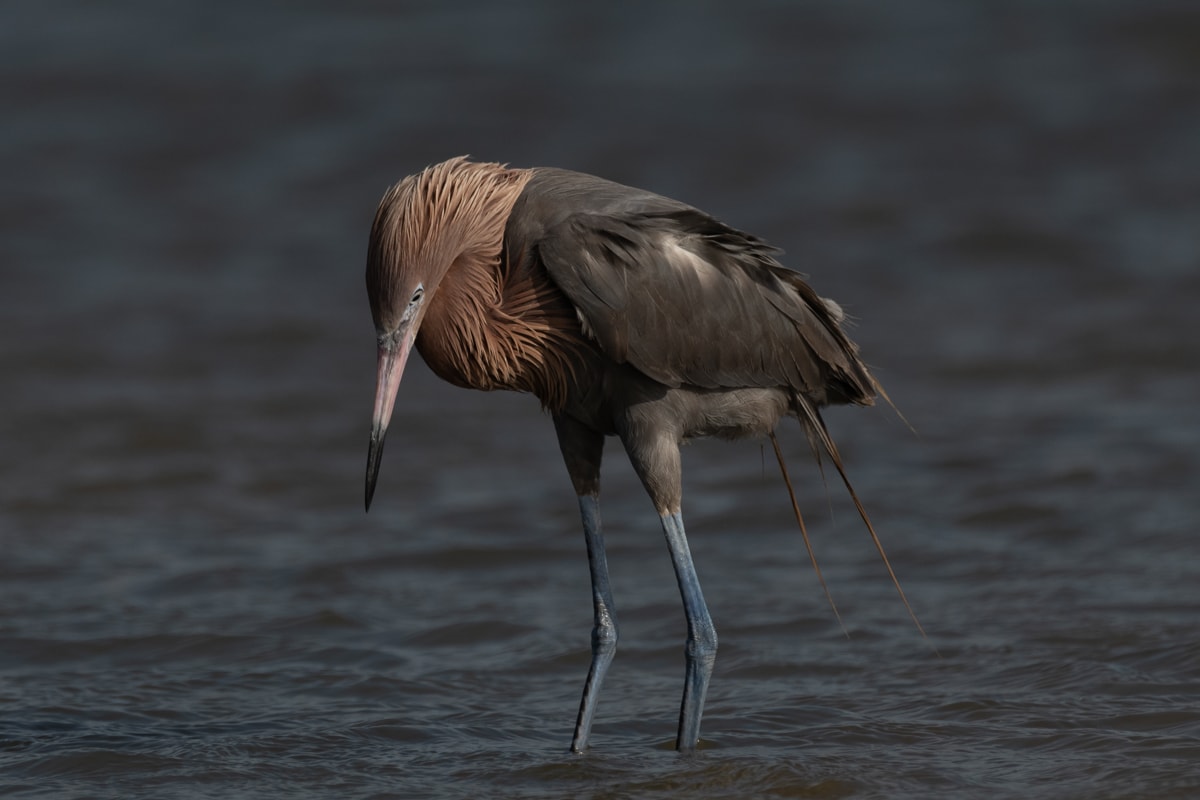
The show begins when more active feeding tactics are employed. Stalking with open wings and weaving back and forth while searching out prey and then stabbing with its strong bill.
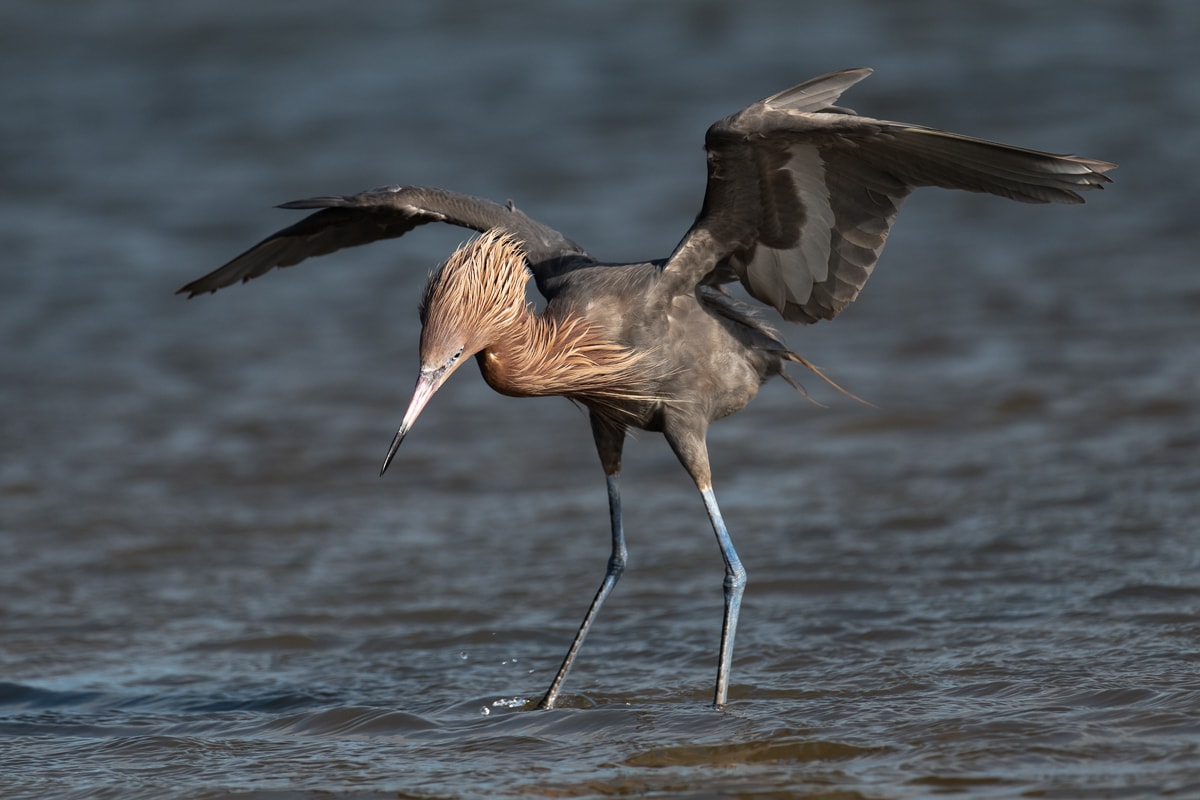
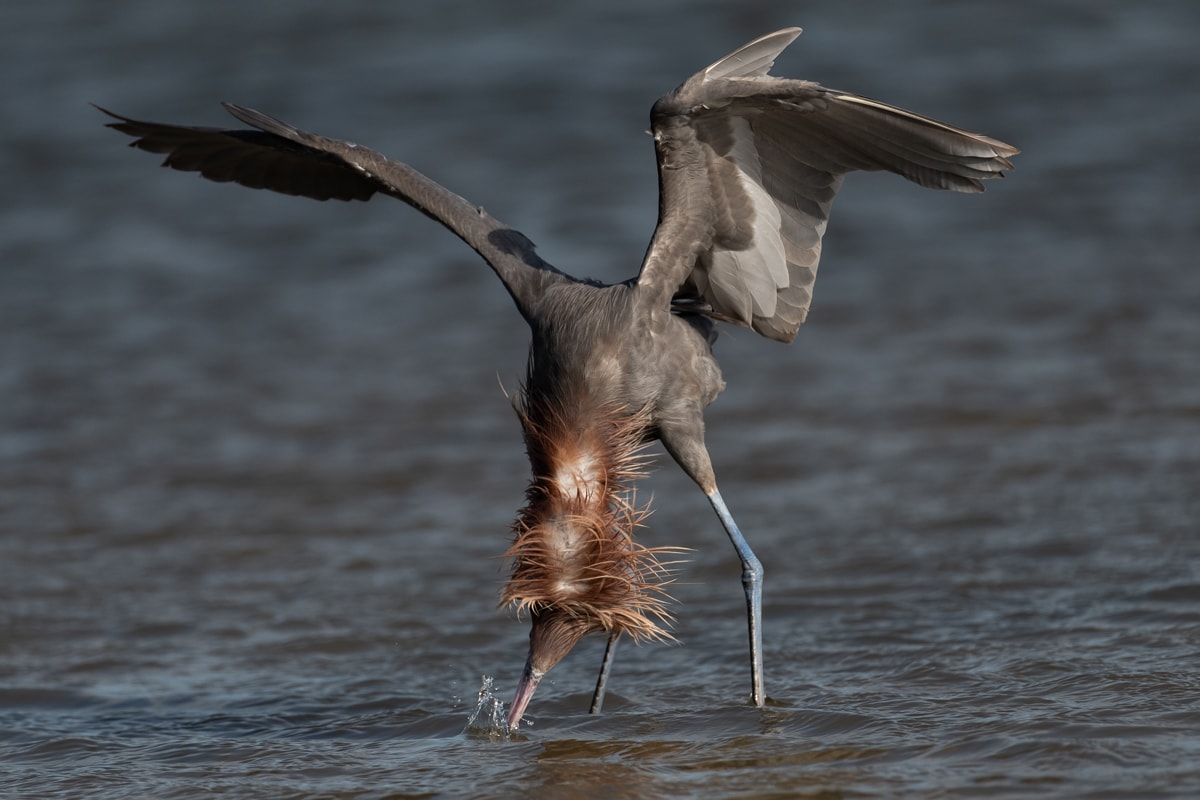
Reddish Egrets also employ a canopy foraging strategy. Wings are raised above the head and held in place while the bird peers into the water. It is thought that the shadow created by the wings attracts prey.
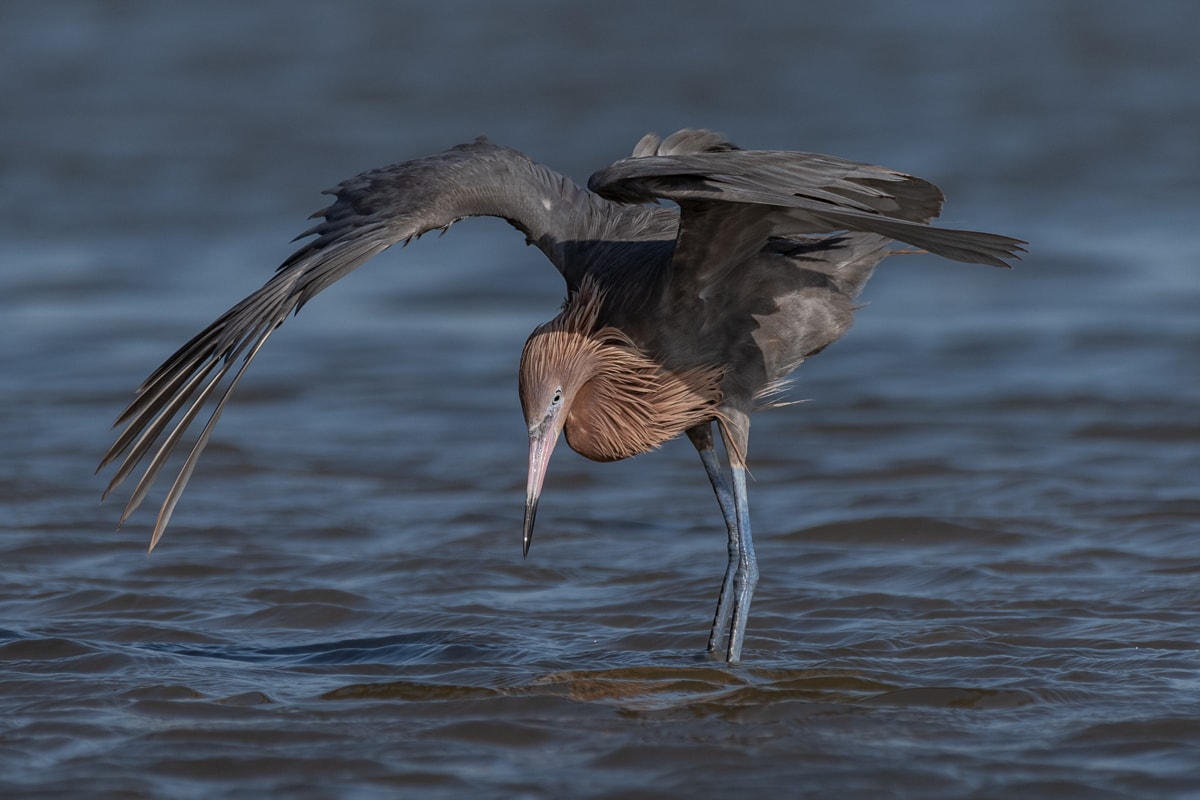
The frantic feeding strategies of the Reddish Egret are comical at times. The “jumping jack”, and frenetic running are all part of the show.
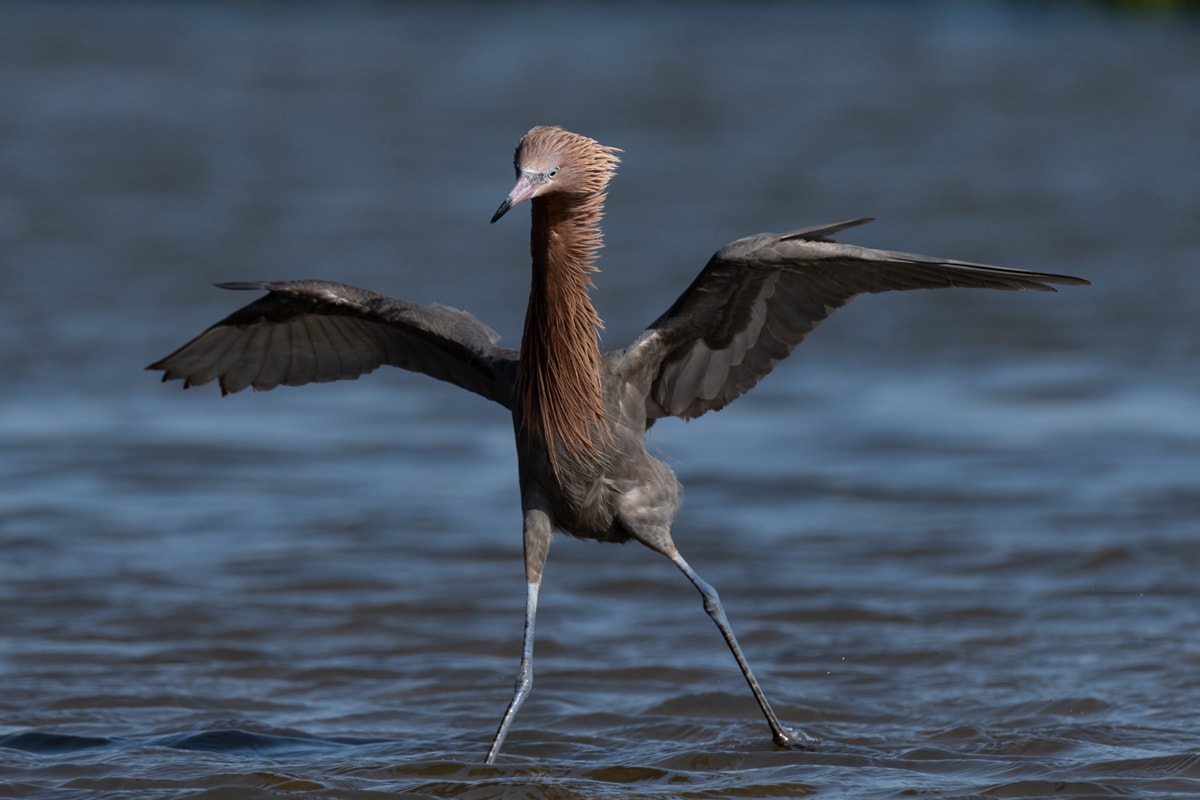
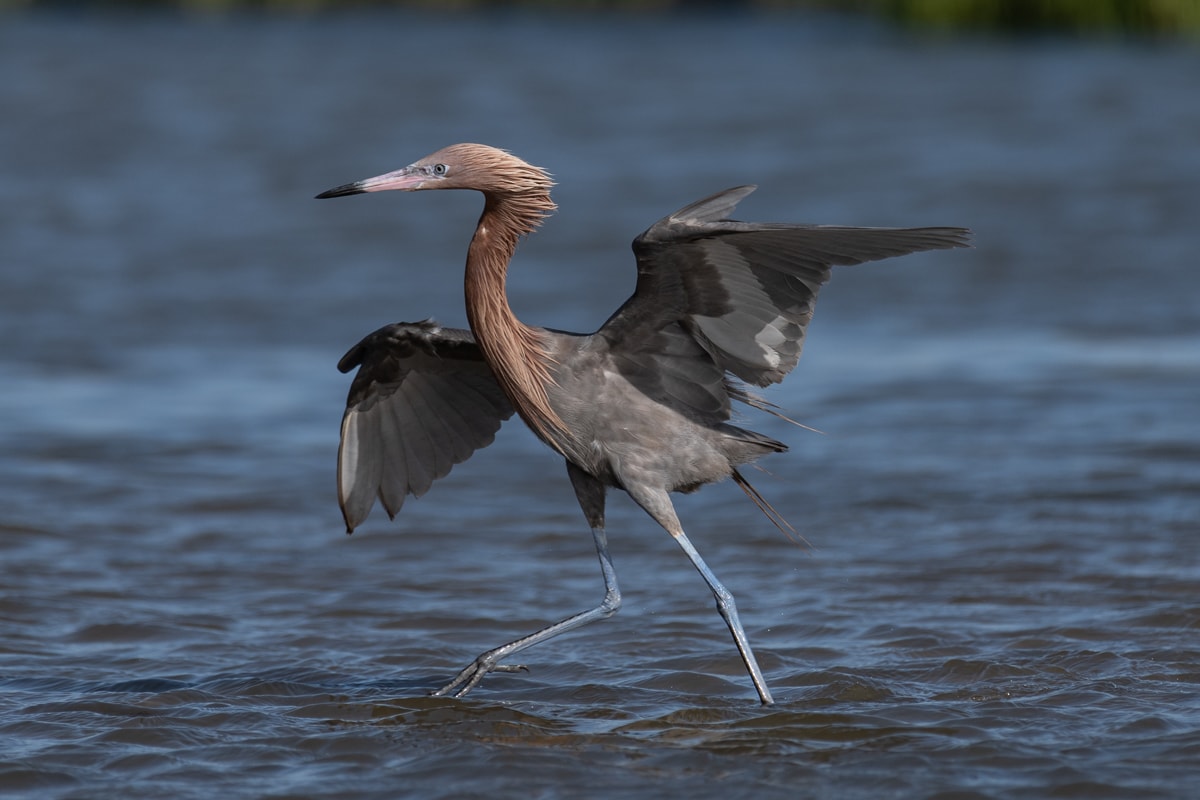
Regardless of the strategy, the Reddish Egret is highly successful hunter. It employs the most varied and most active foraging strategy of any heron species found along the Texas coast.
If you come across one of these birds while along the coast, spend a little time watching. It’s actually a pretty entertaining show.
For more info on the life history of this unique bird, click here